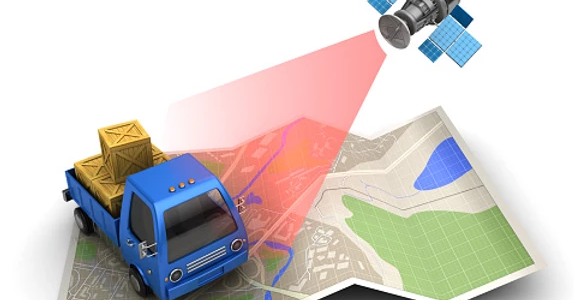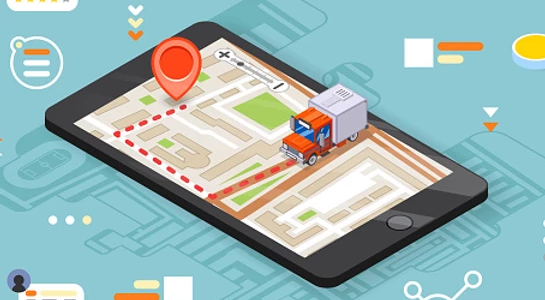Popular Vehicle Tracking Myths Debunked Part 2
In a previous blog, we discussed some of the reasons fleet based companies hold misconceptions around GPS tracking or telematics. And while many of these myths continue to be debunked, more education is needed to address remaining objections and inform potential users of the many applicable benefits of fleet telematics
With that said, below we share and debunk other common telematics and GPS tracking myths still circulating in the industry today.
Myth: Telematics Just Tracks Dots on a Map
The terms telematics and GPS devices are often used interchangeably, which has led to the common assumption that telematics places “dots on a map.” That couldn’t be further from the truth.
A telematics device has GPS tracking capabilities, which many small businesses like taxi, lawn and maid services find helpful to quickly locate employees. This is telematics in its simplest form but providers, such as Geotab, have the ability to track other information like idle time or hard braking.
Could your organization benefit from safe driving? What about a decrease in fuel costs? A telematics device allows you to track information like a driver’s speed, idle time, hard braking, and more. You can use it to optimize your fleet and reduce costs, keep vehicles on a regular preventive maintenance schedule, predict battery failure ahead of time, make fuel tax reporting a breeze and more.
Telematics can generate fleet management reports to help in future route and schedule planning, which can help reduce gas costs and vehicle wear-and-tear. That also means less shop downtime, less paperwork, and less time and money spent on managing your fleet. The best part is you can get a return on your investment pretty quickly.
Myth: Telematics Is Too Expensive
“Telematics is going to cost me thousands of dollars to implement,” is something we hear often from smaller businesses. Depending on fleet size, your needs, and the vendor you select, telematics can be as expensive as $1,000 per month for an enterprise-sized corporation or as affordable as $15 a month for a small business.
When looking at a telematics solution, you will have to compare vendors on hardware, software, and installation costs. Advantage Asset Tracking offers a variety of different data plans depending on what the fleet is ready to manage. Secondly, a telematics device should be thought of as an investment, not an expense, and the ROI should be considered, such as how you’re recouping the cost of the service by using the software to tackle goals such as reducing fuel use and lowering maintenance costs.
Myth: My company is too small to use telematics
Operations of any size can benefit from a telematics device.
For example, a small cleaning company with three or four vehicles could benefit from GPS tracking. If an employee is at a work site and ran out of a certain cleaner, the operations manager or owner could send them to the location of the other cleaners instead of the office, if it means a shorter distance to go.
Or say a customer calls asking when a driver will arrive, and without disturbing the driver, the owner can give a near-exact time the driver will arrive based on where they are on the route.
That same company could track how its employees use the vehicles. Maybe you give your employees a gas card and think they might be using the card to buy gas for their personal vehicles or their friends. When a card is used at a gas station, it will record where the device is at that time. If the data shows the car is 20 miles from where the card was swiped, then you know the driver is using the card inappropriately.
We Are Here to Help
The fleet management industry has come a long way with telematics technology accelerating the speed of how it has advanced in the past 10 years. With all this rapid change, you may have lots of questions. Contact us if you have any questions related to telematics.
Popular Vehicle Tracking Myths Debunked Part 1
The reasons for any misconceptions around GPS tracking or telematics are mostly due to a misunderstanding of the product. Common vehicle tracking myths range from how the devices “monitor” vehicles and drivers, to what the capabilities are, to the types of businesses where it’s needed.
Many of these myths have been debunked, with real applications of the technology solidifying evidence in the case for telematics. Here are some of the more common telematics and GPS tracking myths.
1. Telematics Means Big Brother Is Watching
Telematics tracks information about a vehicle and how you use it. It’s important to not get vehicle telematics mixed up with some of the cell phone GPS tracking systems out there, where drivers must download an app onto their phone. Those types of systems mean the driver’s cell phone is what is actually getting tracked, not the vehicle.
With vehicle telematics, there are tiers of the technology depending on the need of the business. It ranges from a simple GPS tracker that will just tell you where a vehicle is located, all the way to a robust telematics system that allows you to monitor vehicle health, manage productivity, improve fuel efficiency, stay compliant with government regulations, and keep drivers safe.
Theoretically, there’s a lot of information that could be potentially tracked, but any information used is all in the best interest of not just the business but the driver too. For example, getting into an accident could mean getting fired from your job, but in fact many companies use telematics data to score and reward safe and fuel efficient driving performance — not just bad.
2. A Telematics Device Will Void the Warranty
There is a myth that a telematics device will damage some electronics in the car and possibly even void the manufacturer’s warranty. In the U.S., the Moss Magnuson Warranty Act of 1975 specifically prohibits manufacturers from voiding the warranty due to aftermarket additions to the vehicle. So, as long as proof of defect can be attributed to the car manufacturer, then your warranty is valid and enforceable regardless of whether or not you attached an aftermarket part. Plus, the device is in no way changing the vehicle mechanically — think of it more as an engine data viewer and translator. It can see engine performance information and send that information back in a tangible way for use as business intelligence.
3. Drivers Will Lose Driving Time
It’s common to believe that telematics will require more effort and input from your drivers because they’ll have to play with the device or log information. That’s not true.
When a driver turns on the ignition, a device automatically starts collecting and transmitting data as needed. The only situation where a telematics device will require driver input is when the device is being used as an electronic logging device (ELD). And in that case, the system is replacing a paper log system, so the opposite is true with ELDs.
Outside of ELDs, fleets will find time savings in other ways, and often through better and easier recordkeeping, reduced paperwork, and more efficient routing and dispatching to jobs.
We Are Here to Help
The fleet management industry has come a long way with telematics technology accelerating the speed of how it has advanced in the past 10 years. With all this rapid change, you may have lots of questions. Contact us if you’d like more information on these and other myths related to telematics.
How to Promote Safe Driving and Lower Insurance Premiums
Motor vehicle crashes are a leading cause of death in the United States and a major source of emergency room visits. The Centers for Disease Control and Prevention (CDC), the nation’s public health agency, even treats motor vehicle safety as one of its primary concerns.
Speed is a major contributor to the severity of a collision. One of the best ways to significantly reduce both the frequency and severity of collisions is by using data to identify at-risk drivers. With concrete data, you can look at each driver’s baseline, and then help that driver improve over time.
How to promote safe driving
As valuable as it is to identify and coach at-risk drivers, it’s equally important to use the readily available information to identify those doing it right and publicly acknowledge them with an incentive. Rewards and recognition signals your management’s commitment to promoting a safety culture by reinforcing safe behavior.
Such efforts create a gamification opportunity that involves drivers in a healthy competition to see who can be the safest driver, while providing transparency in the data collection and analysis. Drivers see what their supervisors see and rejoice when great drivers are recognized.
Safer driving may lower insurance premiums
We all understand that safer fleets should pay lower premiums. While some companies are seeing premium increases, those sharing driver data with their insurers are holding last year’s rates, and in some cases even seeing premiums decrease.
Behavior-based insurance, which is new to the industry, links premiums directly to predictive metrics because it has been clearly demonstrated that fleets actively engaging with the metrics on their Geotab dashboard can bring loss costs under control. The data creates transparency for the fleet and underwriters by making visible the steps a company is taking to proactively reduce risk, improve driver consistency and change the safety culture.
With objective safety scores based on actual driving data, fleets can benchmark their performance and demonstrate improvement over time, which can lead to the application of additional safety credits for the fleet. Several innovative insurers, convinced by the results of providing more frequent incentives to fleets, have instituted earned premium credit and debit systems to reward effective safety programs each month.
We can help you increase driver safety and reduce insurance costs
In an environment where commercial auto insurance premiums can rise by as much as 20% year over year, having a behavior-based rating system that reduces your premium is very helpful to save costs in the long run. Give us a call to discuss how we can work together to implement the right systems and tools to reduce your risks down the road.
How to Improve Your Fleet’s Fuel Economy
Many fleets, small and large, look to discover the secret formula to improving fuel economy and their bottom line. But what exactly is fuel economy? Read on to find out.
Fuel Economy Defined
Fuel economy is the connection between distance travelled and the amount of fuel consumed for any given vehicle. Typically measured in miles per gallon (MPG), fuel economy can differ greatly depending on the make and model of a vehicle. For example, a small car is likely to have a greater fuel economy (more MPG) than a heavy-duty truck. Though each vehicle has an estimated fuel economy, there are many different ways to improve it.
Benefits of Improving Your Fleet’s Fuel Economy
Today, we have been hit with ever-increasing fuel prices and the pressure to go green is now driven by the need to reduce costs, as well as corporate sustainability targets.
For most businesses, the number one area targeted for reducing costs and improving their bottom line is fuel. As fuel is generally one of the biggest operating costs for fleets, investing in this area can have a great impact. An overall green fleet program targets the improvement of fuel economy by using innovative fleet management technologies like telematics. Also, more and more businesses are turning to hybrid and electric vehicle purchases to help build green fleets.
Using Telematics to Make Your Fleet More Efficient
One method that helps drive fuel savings is to implement a telematics solution. When using telematics, you can reduce fuel consumption by:
-
Improving driver productivity by reducing vehicle idling time, speeding and harsh acceleration
-
Finding shorter routes to reduce total miles driven
-
Detecting engine issues that could be contributing to high fuel spending
-
Analyzing your miles per gallon (MPG) reports to pinpoint your most fuel efficient vehicles
-
Understanding the impact of out-of route refueling time on your business
How We Can Help
Armed with information, business owners can start to build plans that tackle fuel economy goals and objectives. Advantage Asset Tracking can help you address your needs and provide opportunities to achieve a positive ROI. For more information on how Geotab can assist you with your fuel economy needs, request a demo with us today.
Sourcewell makes it easy for government fleets to purchase telematics
Geotab’s newest contracts with Sourcewell give government fleets across the U.S. and Canada a streamlined, cost-effective way to add telematics to their operations.
Geotab has recently added contracts to what is becoming a growing list of blanket agreements across North America. These contracts, awarded by Sourcewell and NASPO ValuePoint are significant because they give government agencies across the U.S. and Canada (available through Sourcewell only) easier access to telematics.
The primary benefit of using Sourcewell is to procure telematics solutions without having to go through a time-consuming and expensive RFP process. Avoiding the time-consuming and costly RFP process is perhaps the key benefit for any cooperative purchasing contract.
In fact, the cost benefits of procuring a Geotab device through the Sourcewell or the NASPO ValuePoint contract are hard to beat:
-
No capital expenditures and no lock-in term commitments: There are no up-front costs to procure the Geotab solution, which gives agencies the flexibility to acquire telematics outside of traditional budgeting periods, and avoids lengthy contract periods.
-
Competitive pricing: pricing includes our top-rated ProPlus package, which comes with the features and functions designed to optimize your fleet’s operations.
-
Fixed national discounted pricing and bundle offer: The bundle offer through the Sourcewell or NASPO ValuePoint contract includes a GO device, the ProPlus Plan, harness and installation for one monthly fixed price, allowing for maximum purchase flexibility at a low cost.
-
Get what you want: Flexibility isn’t only in the bundle offer. You can choose to add more products and services that you need — not just what’s available off the shelf. We’re also committed to putting the effort in to make sure that Geotab’s products are readily and easily available at the time of purchase.
Today, one of the biggest threats government fleets face is to their data security. With Geotab, you will be getting not only value but peace of mind as they have established themselves as a leader in securing telematics data in part by meeting the stringent security requirements set forth by the U.S. Federal Government. This means that you can rest easy and trust that your data is safe.
Around the country, governments of all sizes are committing to carbon-reducing sustainable policies. Fleets are often key to these efforts, either by controlling traditional fuel use or by transitioning to electric vehicles (EVs), and we are there to support this transition. Utilizing Geotab’s complimentary Electric Vehicle Suitability Assessment (EVSA) tool we are able to provide fleet managers with the data they need to understand where it makes sense to go electric and provides insights that help enhance the efficient operation of both ICE and EV fleets in one single platform.
What is available in the contracts?
The telematics solution consists of the easy-to-install GO device powered by MyGeotab. The open API solution includes everything fleets have come to expect from a robust telematics platform, including Active Tracking, geofencing, mapping capabilities, a powerful rules engine, collision reconstruction information and customized reporting.
With the open platform, we can help fleets easily integrate the other solutions into other fleet management platforms to maximize efficiency and operations. As a government fleet manager, you know that your operation has very unique requirements that are distinct from commercial fleets. And because of that, there are solutions that are specific to government fleets, including:
-
Public Works solution, which is designed to help you meet the challenges of varied environments and seasonal conditions, by helping your agency manage vehicles such as salt spreaders, snow plows, street sweepers and waste management vehicles.
-
Camera solutions are becoming a necessary piece of equipment for a growing number of fleets. Forward- and cab-facing cameras, which are equipped with DVR functionality, are designed to monitor driver activity to help keep them safe and secured while on the road — no matter if it is a traffic-clogged urban area or a deserted mountain road.
-
Keyless and Motorpool solution is a scalable, digital key solution designed to help protect your assets, reduce costs and increase utilization for your motor pool.
-
Driver Identification allows you to track who is using the vehicle and when. This feature includes in-cab coaching and text-to-speech capabilities for driver feedback.
-
Extended Coverage, provided by the IOX-SATIRDV2K1, IOX Iridium satellite Add-On, which includes harness and antenna, installation, training and a monthly service plan. With this Add-On and the IRIDIUM Satellite modem, if one of your vehicles travels outside of cellular or network connection, you can continue to track it even if cellular activity is lost.
-
Original Equipment Manufacturer (OEM) integration: OEMs are beginning to include embedded telematics devices in their vehicles right on the assembly line. To support fleets wanting to use the OEM embedded solution, Geotab’s OEM telematics solution integrates OEM vehicle and equipment data into MyGeotab to provide a holistic view of fleet data on one easy-to-use platform. This option is available at a monthly rate.
Sourcewell
To get all of the benefits of Geotab’s Sourcewell contract, all you need to do is to fill out the online membership application. Your organization may even already be a member, which is checked first thing in the application process.
Once you have qualified, you can contact one of our government fleet specialists for a quote or Schedule a demo now. Our government fleet advisors would be happy to walk you through the process and answer any questions.






